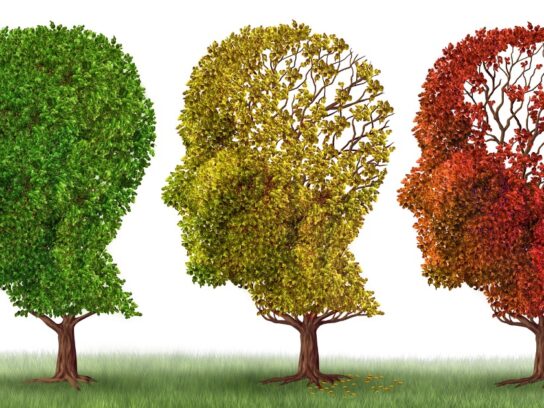
June is Alzheimer’s and Brain Awareness Month. The Alzheimer’s Association says, as of 2025, more than 7 million Americans are living with the neurodegenerative disease. Here in Maryland, more than 127,000 residents have Alzheimer’s. Studies conducted in 2020 show more than 22,000 residents in Montgomery County had the disease.
Alzheimer’s primarily affects memory, thinking, and behavior. It is the most common cause of dementia. The Alzheimer’s Association says the disease kills more people each year than breast cancer and prostate cancer combined.
Researchers predict as the population ages, the number of Alzheimer’s cases will rise to 13 million within 25 years.
MCM spoke with Dr. Angela Hsu who is a geriatrician, internist and Physician Director for Memory Care Services at Kaiser Permanente Mid-Atlantic.
No Cure, Researchers Still Studying Cause
Hsu said Alzheimer’s is one of the most common causes of dementia. The disease progresses over time and has no cure. While there are medications available to slow down the progression of the disease and help with symptoms, they do not stop the degeneration.
“I think part of the reason is we don’t really fully understand the mechanism of Alzheimer’s disease. We have some working theories. We have some hypotheses and maybe we understand parts of it. Scientists are definitely pursuing all avenues, but we don’t know for sure,” Hsu said.
Early Signs Before Symptoms
Alzheimer’s is often considered a disease of elderly Americans, people who are 65 and older. However, Hsu said the disease actually may start in some people 10 to 20 years before they develop symptoms.
“There are different proteins that we’ve identified that are present in the brains of people who have dementia. Some new blood tests are available that can identify these proteins, years before there are any symptoms. There is some talk in the Alzheimer’s community of whether we should diagnose anyone who has these proteins with Alzheimer’s disease, even if they have no memory problems at all,” Hsu said.
“This is a real shift in how we think about Alzheimer’s and how we diagnose it. Does it serve people to have a diagnosis of Alzheimer’s disease based on the presence of a protein, even if they have no cognitive symptoms?” she added.
Hsu said the problem with solely using proteins to diagnose Alzheimer’s is there is still only a 25 percent chance a person will develop dementia.
“So having the proteins itself is not enough to say we understand what will happen to you and how your memory will progress,” Hsu explained.
Possible Triggers for Alzheimer’s
The brain is one of the most complex organs in the human body. Hsu said when the brain suffers wear and tear that can increase a person’s chance of developing Alzheimer’s. Certain infections, medical problems such as high blood pressure, diabetes, or vascular disease can increase one’s risk of degeneration in the brain. Brain injuries, concussions, and alcohol use also can increase a person’s risk.
“We’ve been learning more and more that alcohol is probably more toxic to the brain and body than we realize, and so my recommendation now is actually to limit alcohol as much as possible,” Hsu said.
Preventative Steps
She said there are many preventative steps to reduce people’s risk of Alzheimer’s. They include getting a good night’s sleep, eating a healthy diet, and staying physically active.
“Good aerobic exercise is very preventative. It can reduce your risk of dementia by 30 to 40%. Thirty minutes of moderate intensity exercise every day can help improve circulation to the brain. Eating a healthy diet that is anti-inflammatory also can help. You can call it the mind diet. That includes more beans, more greens, more nuts, more berries, less red meats, less sweets,” Hsu explained.
She also recommends people do activities that stimulate the brain such as learning new skills. Some people put together puzzles or play games. But she said if those become too easy, she recommends people find a new challenge; perhaps learn a new skill, or take an art or music class. Hsu said that can help build more connections in the brain. When a person has more connections, and then encounters stress and damage, those pathways can help a person maintain function for a longer period of time. This can help stave off dementia. She said the brain is like a muscle, if a person does not use it, he or she will lose it.
Symptoms of the Disease
As people age, it is normal for people to forget a name, or place, or where they put their keys. So forgetfulness is fairly common, but what distinguishes Alzheimer’s is when the disease has a profound impact on how a person functions.
“Some potential signs include if you cannot pay your bills on time, or you are having trouble driving because you have forgotten where you are going. You might notice you have more trouble processing things. You might notice that you are repeating yourself more. When the function is really impacted, that’s definitely more than I would consider normal aging,” Hsu said.
Alzheimer’s is associated with memory loss. However, other brain disorders such as Parkinson’s disease, frontotemporal degeneration, Lewy body disease, and normal pressure hydrocephalus can exhibit different symptoms and affect the brain in different ways.
Doctors will perform cognitive tests on patients, and perhaps use MRIs or CT scans to determine the cause of a brain disease. Hsu said medicines are available to help treat the symptoms of Alzheimer’s, but she said the drugs are not a cure. They do not prevent the disease from getting worse. Hsu said some of the medications can have side effects. Some people experience more headaches, dizziness, even swelling or bleeding in the brain.
Hsu said if people are concerned about their memory they should speak to their doctor. There are tests and medical conditions that doctors can screen for to determine what is wrong.
“If you are experiencing a problem don’t keep it to yourself, even if it seems not a big deal. It is never too early to start thinking about brain health and what you can do to reduce your risk,” Hsu said.
Alzheimer’s Toll on Families
There can be a great emotional and financial toll on families whose loved ones have Alzheimer’s. MCM spoke with Laura Byer who is the Program Manager for the Alzheimer’s Association for the National Capital Area Chapter.
She said nearly 12 million Americans provide unpaid care for a family member or friend with Alzheimer’s or other dementias. The estimated cost of care exceeds $413 billion. In Maryland, about a quarter million residents help care for Alzheimer’s patients. That unpaid care is valued at $7 billion.
People with Alzheimer’s can live four to eight years after doctors diagnose them, but some patients can live as long as 20 years. Byer said the Alzheimer’s Association provides support and care.
“It is important for people who are caring for a loved one to connect with others also caring for someone with Alzheimer’s or another form of dementia. We offer support groups that allow caregivers to connect. Groups are both in person and online,” Byer said.
“It’s critical that all family members are educated about the disease and the stages. It is important to support the primary caregiver. Watch for signs of caregiver stress,” Byer added.
County Offers Help
The County has provided a grant to the Alzheimer’s Association local chapter. The money has helped more than 1,000 people receive information, referral calls, and care consultations.
The organization provides education programs either virtually or in-person. Some of the topics covered include: Healthy Living for Your Brain and Body, and Understanding Alzheimer’s and Dementia. It has presented its programs throughout the community including adult day centers, community villages, and assisted living facilities. The Association’s support services are free.
More Information
For resources and 24/7 support, call the Alzheimer’s Association Helpline at 800-272-3900 or visit the Alzheimer’s Association website.


Comments are closed.